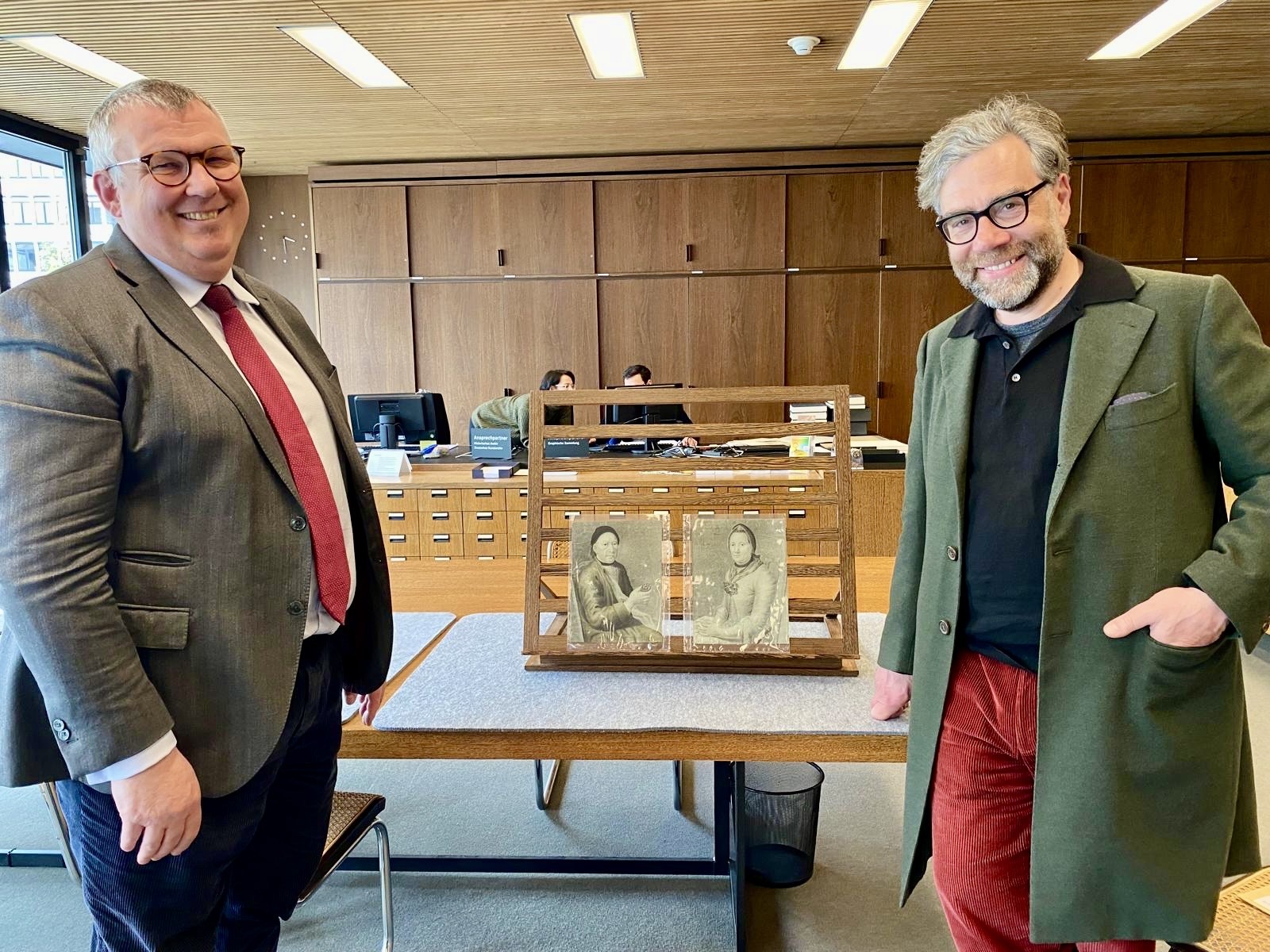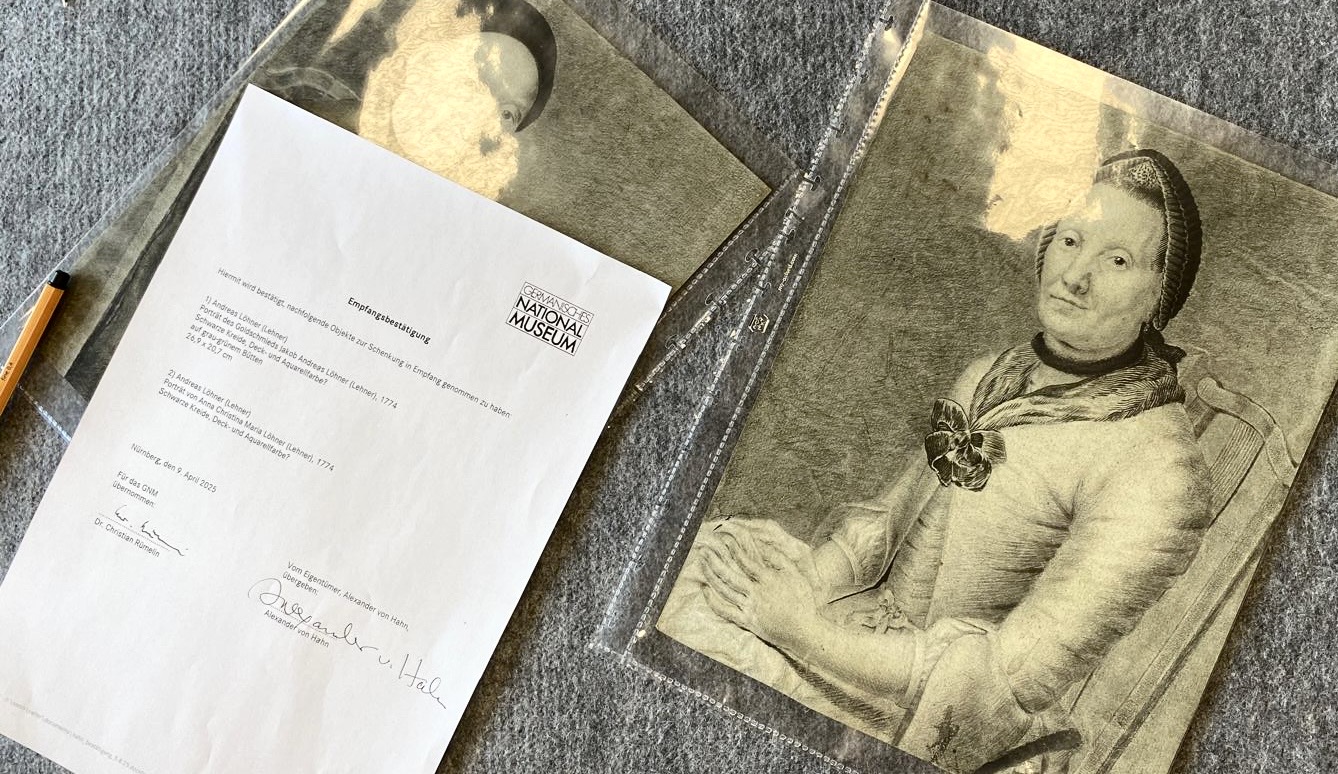On April 9th Dr. Christian Rümelin, curator of the prints and drawing department of Germanisches Nationalmuseum receved in Nuremberg Kloster Zscheiplitz Family Museum's director Dr. Alexander von Hahn to receive two portraits from the Hahn-Weissenburg family collection.

The indian ink portraits on paper represent members of the prominent Nuremberg dinasty of metalworkers, jewellers and goldsmith: Jacob Andreas Löhner (1717-1780), who passed his master craftsman examination in 1749; and his wife Anna Christina Maria Löhner, born Zizer (1719-1778). Both portraits were executed by their son, goldsmith Andreas, who also added a dedicatory inscription on the back of each portrait.

Some members of the dynasty were members of the Red Forge Guild (Zunft der Rotschmiede) -- a unique institution with strong traditions of self-governance and artistic excellence. As Wikipedia states:
They were only allowed to practise their craft outside of Nuremberg with the permission of the council in order to safeguard Nuremberg's outstanding position in brass production and processing. The guild rules also regulated training with 4 years of apprenticeship and 6 years as a journeyman. An openwork key ring, a table chandelier and a masterpiece of their own choice had to be produced for the master craftsman's examination. The Nuremberg red smiths used the same marks as the goldsmiths and silversmiths.
They were only allowed to practise their craft outside of Nuremberg with the permission of the council in order to safeguard Nuremberg's outstanding position in brass production and processing. The guild rules also regulated training with 4 years of apprenticeship and 6 years as a journeyman. An openwork key ring, a table chandelier and a masterpiece of their own choice had to be produced for the master craftsman's examination. The Nuremberg red smiths used the same marks as the goldsmiths and silversmiths.
Since Albrecht Duerer's oil portraits of his parents, on display at the same museum, no other family portraits of Nuremberg's artisans are known to have survived. In stark contrast to the Duerer's portraits, however, Lohners' portraits were never expected to be exhibited publically: Intimate and nuanced, the portraits are son's loving tribute to his parents, not only a proclamation of his skills as drawer and portretist.

The current head of the family, Alexander von Hahn has expressed his sincere admiration for the Museum: "It is a great honour for the family to be accepted into the circle of donors of the Germanisches Nationalmuseum. Indeed, the GNM is a true treasure trove of german art with an unparalleled collection of immense cultural value. Our gift is a tribute to the centuries old artistic traditions of Nuermberg, but also to theese who work tirelessly to preserve its past for the generations to come."
The Germanisches Nationalmuseum is a museum in Nuremberg, Germany. It houses a large collection of items relating to German culture and art, from prehistoric times to the present day, and is Germany's largest museum of cultural history.
The Museum was founded in 1852 by a group of individuals led by baron Hans von und zu Aufsess, whose goal was to assemble a "well-ordered compendium of all available source material for German history, literature and art".

